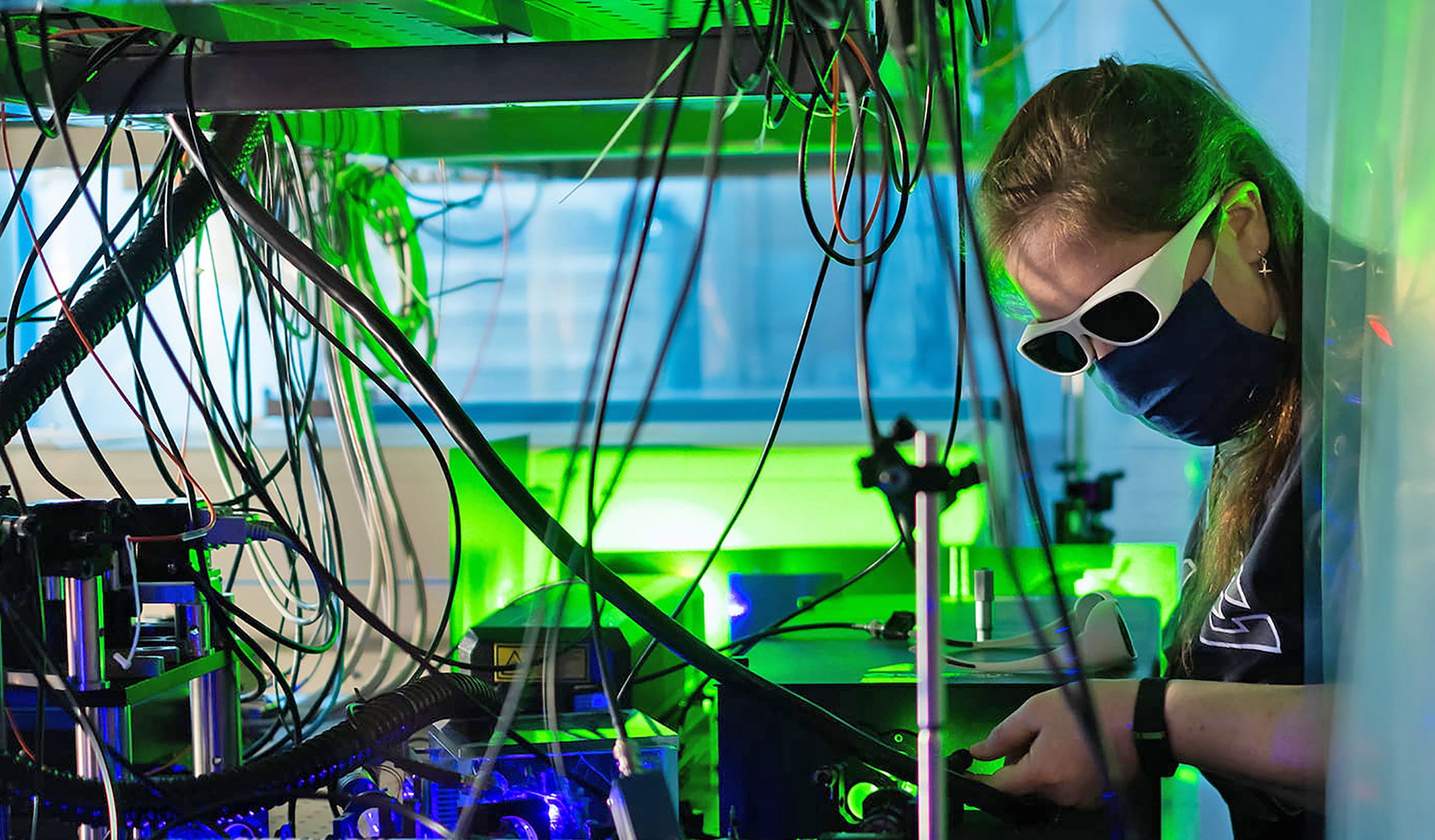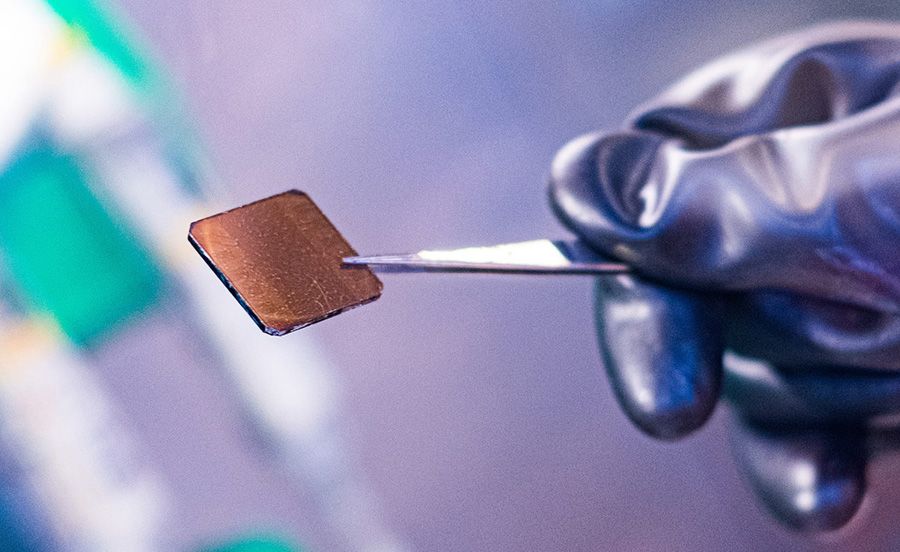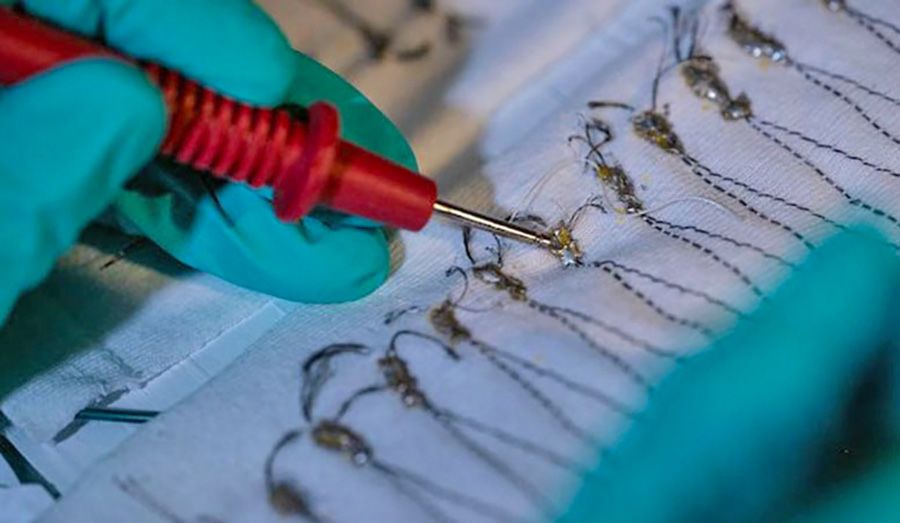Research at Rice leads the way on energy transition and clean technology innovation
Paving the way to a sustainable future

Houston’s “energy capital of the world” status is here to stay — no matter the type of energy — says a report from Rice University’s Baker Institute for Public Policy. The study declares that Houston boasts the talent pool, tax advantages and business-friendly environment to lead in energy transitions and to pioneer the continuing evolution of the global energy system.
Rice realizes it can play a key role in positioning Houston as the leading hub of energy and clean tech innovation. Researchers at the university have been hard at work tackling the many challenges a widespread energy transition presents. They are exploring everything from wind energy, solar power, renewable natural gas, low-carbon LNG and biofuels to battery manufacturing, energy storage enhancements, recycling technologies, and carbon capture, use and storage.
Rice researchers launched or continued several projects along these lines. To highlight a few:
Rare earth elements await in waste: Rare earth elements are hard to get and hard to recycle, but a flash of intuition led Rice University scientists toward a possible solution. The Rice lab of chemist James Tour reports it has successfully extracted valuable rare earth elements (REE) from waste at yields high enough to resolve issues for manufacturers while boosting their profits. The lab’s flash Joule heating process, introduced several years ago to produce graphene from any solid carbon source, has now been applied to three sources of rare earth elements — coal fly ash, bauxite residue and electronic waste — to recover rare earth metals, which have magnetic and electronic properties critical to modern electronics and green technologies.
Bottling the world’s coldest plasma: Rice University physicists have discovered a way to trap the world’s coldest plasma in a magnetic bottle, a technological achievement that could advance research into clean energy, space weather and astrophysics. “To understand how the solar wind interacts with the Earth, or to generate clean energy from nuclear fusion, one has to understand how plasma — a soup of electrons and ions — behaves in a magnetic field,” said Rice Dean of Natural Sciences Tom Killian, the corresponding author of a published study about the work in Physical Review Letters.

Images produced by laser-induced fluorescence show how a rapidly expanding cloud of ultracold plasma (yellow and gold) behaves when confined by a quadrupole magnet. Ultracold plasmas are created in the center of the chamber (left) and expand rapidly, typically dissipating in a few thousandths of a second. Using strong magnetic fields (pink), Rice physicists trapped and held ultracold plasmas for several hundredths of a second. By studying how plasmas interact with strong magnetic fields in such experiments, researchers hope to answer questions related to clean fusion energy, solar physics, space weather and more. (Image courtesy of T. Killian/Rice University)

A thin film of 2D halide perovskite crystals of uniform thickness. Rice engineers discovered a self-assembly method for producing the films from “seeds,” submicroscopic pieces of 2D crystals that serve as templates. (Photo by Jeff Fitlow/Rice University)
Where the rubber meets the road: Rice University scientists have optimized a process to convert waste from rubber tires into graphene that can, in turn, be used to strengthen concrete, the most-produced material in the world. “Making concrete produces as much as 9% of the world’s carbon dioxide emissions,” said Rice chemist James Tour. “If we can use less concrete in our roads, buildings and bridges, we can eliminate some of the emissions at the very start.” The flash process introduced by Tour and his colleagues in 2020 has been used to convert food waste, plastic and other carbon sources by exposing them to a jolt of electricity that removes everything but carbon atoms from the sample. Those atoms reassemble into valuable turbostratic graphene, making it easier to use in composite materials.
Solar energy collectors grown from seeds: Rice University engineers have created microscopic seeds for growing remarkably uniform 2D perovskite crystals that are both stable and highly efficient at harvesting electricity from sunlight. Halide perovskites are organic materials made from abundant, inexpensive ingredients, and Rice's seeded growth method addresses both performance and production issues that have held back halide perovskite photovoltaic technology. “We’ve come up with a method where you can really tailor the properties of the macroscopic films by first tailoring what you put into solution,” said study co-author Aditya Mohite, an associate professor of chemical biomolecular engineering and of materials science and nanoengineering at Rice.
Where the rubber meets the road: Rice University scientists have optimized a process to convert waste from rubber tires into graphene that can, in turn, be used to strengthen concrete, the most-produced material in the world. “Making concrete produces as much as 9% of the world’s carbon dioxide emissions,” said Rice chemist James Tour. “If we can use less concrete in our roads, buildings and bridges, we can eliminate some of the emissions at the very start.” The flash process introduced by Tour and his colleagues in 2020 has been used to convert food waste, plastic and other carbon sources by exposing them to a jolt of electricity that removes everything but carbon atoms from the sample. Those atoms reassemble into valuable turbostratic graphene, making it easier to use in composite materials.
Solar energy collectors grown from seeds: Rice University engineers have created microscopic seeds for growing remarkably uniform 2D perovskite crystals that are both stable and highly efficient at harvesting electricity from sunlight. Halide perovskites are organic materials made from abundant, inexpensive ingredients, and Rice's seeded growth method addresses both performance and production issues that have held back halide perovskite photovoltaic technology. “We’ve come up with a method where you can really tailor the properties of the macroscopic films by first tailoring what you put into solution,” said study co-author Aditya Mohite, an associate professor of chemical biomolecular engineering and of materials science and nanoengineering at Rice.

A thin film of 2D halide perovskite crystals of uniform thickness. Rice engineers discovered a self-assembly method for producing the films from “seeds,” submicroscopic pieces of 2D crystals that serve as templates. (Photo by Jeff Fitlow/Rice University)
BCarbon: Rice’s Baker Institute for Public Policy created one of the best publicly available protocols for soil carbon offsets in the United States, according to CarbonPlan, a nonprofit that analyzes climate solutions based on the best available science and data. BCarbon is a system to remove carbon dioxide from the atmosphere and store it in the soil as organic carbon. It is a scalable soil carbon storage standard designed to work for landowners, businesses and soil carbon storage buyers. Comprised of 10 principles, the standard allows landowners to monetize soil carbon storage as a property right.
Fiber-optic monitors: Rice University geoscientists and their colleagues received support to develop sophisticated fiber-optic sensors and seismic sources to find and evaluate small faults deep underground at sites that store carbon dioxide (CO2) to keep it out of the atmosphere. The Department of Energy awarded Rice geoscientist Jonathan Ajo-Franklin $1.2 million to adapt his lab’s distributed acoustic sensing (DAS) method to monitor storage sites where reactivation of small faults could allow leakage into adjacent groundwater or the atmosphere. The project is part of $4 million in grants announced in late May to enhance the safety and security of CO2 storage.
Turning heat into power: Invisibly small carbon nanotubes aligned as fibers and sewn into fabrics become a thermoelectric generator that can turn heat from the sun or other sources into energy. The Rice University lab of physicist Junichiro Kono led an effort with scientists at Tokyo Metropolitan University and the Rice-based Carbon Hub to make custom nanotube fibers and test their potential for large-scale applications. Their small-scale experiments led to a fiber-enhanced, flexible cotton fabric that turned heat into enough energy to power an LED.

Carbon nanotubes woven into threadlike fibers and sewn into fabrics become a thermoelectric generator that can turn heat from the sun or other sources into energy. (Photo by Jeff Fitlow/Rice University)

A concept for a house using windowpanes designed by Rice University engineers to redirect light from inside and out to edge-band solar cells. (Image courtesy of Yilin Li)
Luminescent solar concentrators: Rice engineers developed polymer cores that redirect light from any source to solar cells. This suggests a colorful solution to next-generation energy collection: Luminescent solar concentrators (LSCs) in your windows. Led by Rafael Verduzco and postdoctoral researcher and lead author Yilin Li of Rice’s Brown School of Engineering, the team designed and built foot-square “windows” that sandwich a conjugated polymer between two clear acrylic panels. The thin middle layer is the secret sauce. It’s designed to absorb light in a specific wavelength and guide it to panel edges lined with solar cells.
Luminescent solar concentrators: Rice engineers developed polymer cores that redirect light from any source to solar cells. This suggests a colorful solution to next-generation energy collection: Luminescent solar concentrators (LSCs) in your windows. Led by Rafael Verduzco and postdoctoral researcher and lead author Yilin Li of Rice’s Brown School of Engineering, the team designed and built foot-square “windows” that sandwich a conjugated polymer between two clear acrylic panels. The thin middle layer is the secret sauce. It’s designed to absorb light in a specific wavelength and guide it to panel edges lined with solar cells.

A concept for a house using windowpanes designed by Rice University engineers to redirect light from inside and out to edge-band solar cells. (Image courtesy of Yilin Li)
Learn more about these and other exciting energy transition projects and developments by visiting Rice Research Review.
This sponsored content was written and provided by Rice University. The editorial team of Inside Higher Ed had no role in its production.


